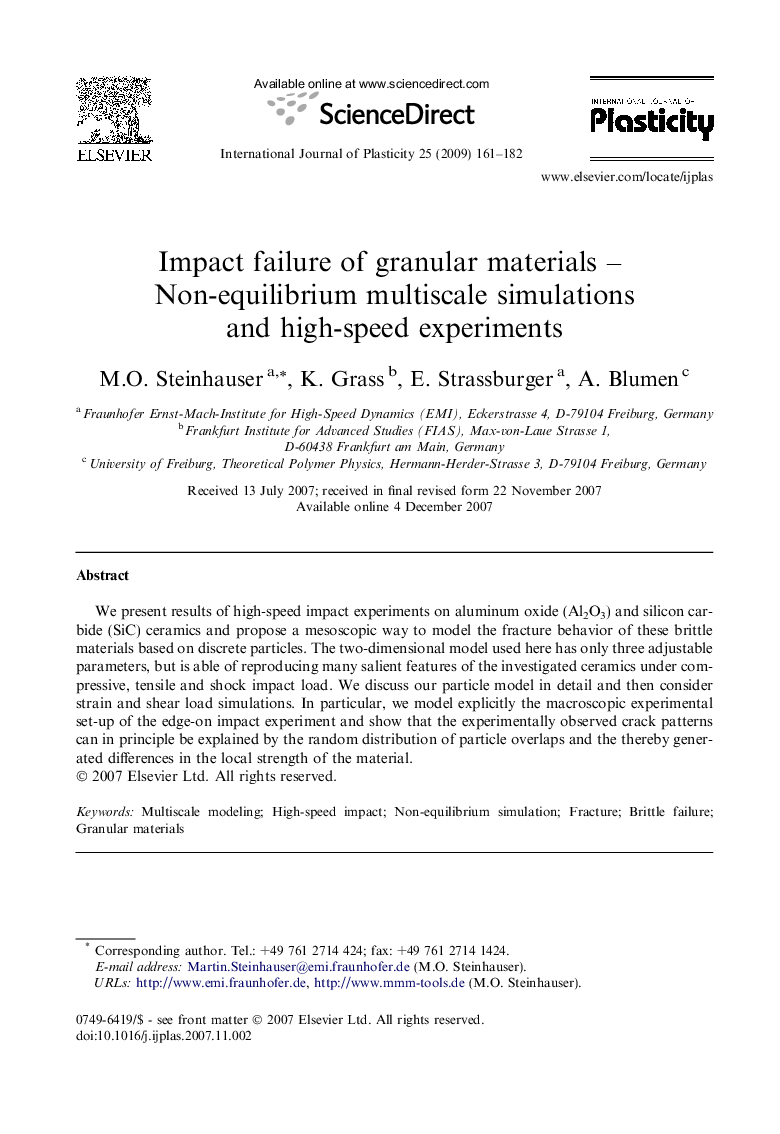| Article ID | Journal | Published Year | Pages | File Type |
|---|---|---|---|---|
| 787496 | International Journal of Plasticity | 2009 | 22 Pages |
We present results of high-speed impact experiments on aluminum oxide (Al2O3) and silicon carbide (SiC) ceramics and propose a mesoscopic way to model the fracture behavior of these brittle materials based on discrete particles. The two-dimensional model used here has only three adjustable parameters, but is able of reproducing many salient features of the investigated ceramics under compressive, tensile and shock impact load. We discuss our particle model in detail and then consider strain and shear load simulations. In particular, we model explicitly the macroscopic experimental set-up of the edge-on impact experiment and show that the experimentally observed crack patterns can in principle be explained by the random distribution of particle overlaps and the thereby generated differences in the local strength of the material.
